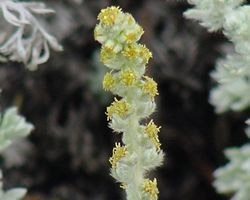|
Cirsilineol
Cirsilineol is a bioactive flavone Flavone is an organic compound with the formula . A white solid, flavone is a derivative of chromone with a phenyl (Ph) substituent adjacent to the ether group. The compound is of little direct practical importance, but susbstituted derivatives, t ... isolated from '' Artemisia'' and from '' Teucrium gnaphalodes''.Flavonoid Aglycones and Glycosides from Teucrium gnaphalodes. F. A. T. Barberán, M. I. Gil, F. Tomás, F. Ferreres and A. Arques, J. Nat. Prod., 1985, 48 (5), pages 859–860, References O-methylated flavones {{aromatic-stub ... [...More Info...] [...Related Items...] OR: [Wikipedia] [Google] [Baidu] |
Teucrium Gnaphalodes
''Teucrium gnaphalodes'' is a plant species in the genus ''Teucrium''. It is endemic to the Iberian Peninsula and grows at altitudes between 200 and 1500 m. It flowers from March to July. The flavones diosmin, cirsimaritin, salvigenin, cirsilineol, cirsiliol, luteolin, apigenin and the flavanone naringenin Naringenin is a flavorless, colorless flavanone, a type of flavonoid. It is the predominant flavanone in grapefruit, and is found in a variety of fruits and herbs. Structure Naringenin has the skeleton structure of a flavanone with three hydro ..., as well as the flavone glycosides luteolin-7-O-β-D-glucoside and apigenin-7-O-β-D-glucoside, and the diglycosides luteolin-7-O-β-D-rutinoside, luteolin-7-O-β-D-neohesperidoside ( veronicastroside) and luteolin-7-O-β-D- sambubioside can be found in ''T. gnaphalodes''.Flavonoid Aglycones and Glycosides from Teucrium gnaphalodes. F. A. T. Barberán, M. I. Gil, F. Tomás, F. Ferreres and A. Arques, J. Nat. Prod., 1985, 48 ... [...More Info...] [...Related Items...] OR: [Wikipedia] [Google] [Baidu] |
Flavone
Flavone is an organic compound with the formula . A white solid, flavone is a derivative of chromone with a phenyl (Ph) substituent adjacent to the ether group. The compound is of little direct practical importance, but susbstituted derivatives, the flavones and flavonoids are a large class of nutritionally important natural products. Flavone can be prepared in the laboratory by cyclization of 2-hydroxacetophenone. Isomeric with flavone is isoflavone, where the phenyl group is adjacent to the ketone In organic chemistry, a ketone is a functional group with the structure R–C(=O)–R', where R and R' can be a variety of carbon-containing substituents. Ketones contain a carbonyl group –C(=O)– (which contains a carbon-oxygen double bon .... References {{Flavones ... [...More Info...] [...Related Items...] OR: [Wikipedia] [Google] [Baidu] |
Artemisia (genus)
''Artemisia'' () is a large, diverse genus of plants with between 200 and 400 species belonging to the daisy family Asteraceae. Common names for various species in the genus include mugwort, wormwood, and sagebrush. ''Artemisia'' comprises hardy herbaceous plants and shrubs, which are known for the powerful chemical constituents in their essential oils. ''Artemisia'' species grow in temperate climates of both hemispheres, usually in dry or semiarid habitats. Notable species include '' A. vulgaris'' (common mugwort), '' A. tridentata'' (big sagebrush), '' A. annua'' (sagewort), '' A. absinthium'' (wormwood), ''A. dracunculus'' (tarragon), and '' A. abrotanum'' (southernwood). The leaves of many species are covered with white hairs. Most species have strong aromas and bitter tastes from terpenoids and sesquiterpene lactones, which discourage herbivory, and may have had a selective advantage. The small flowers are wind-pollinated. ''Artemisia'' species are us ... [...More Info...] [...Related Items...] OR: [Wikipedia] [Google] [Baidu] |
